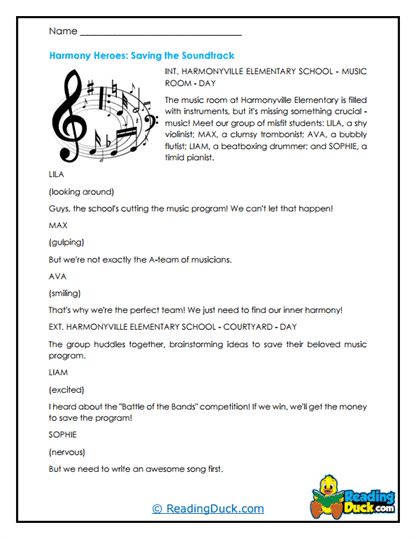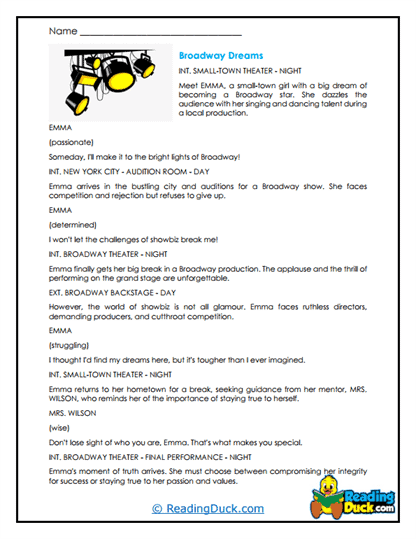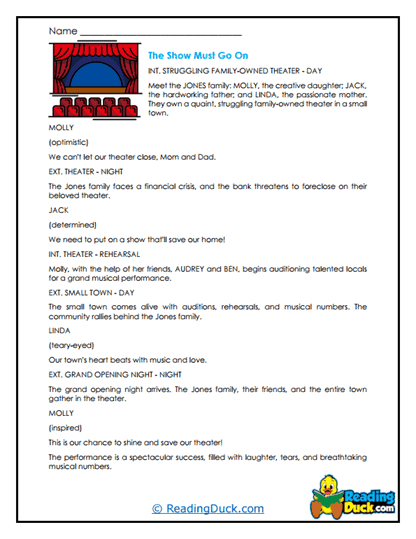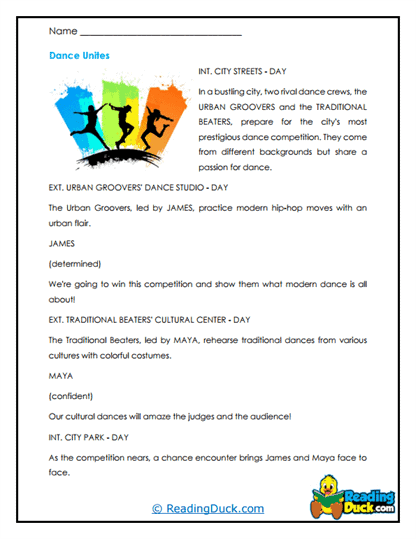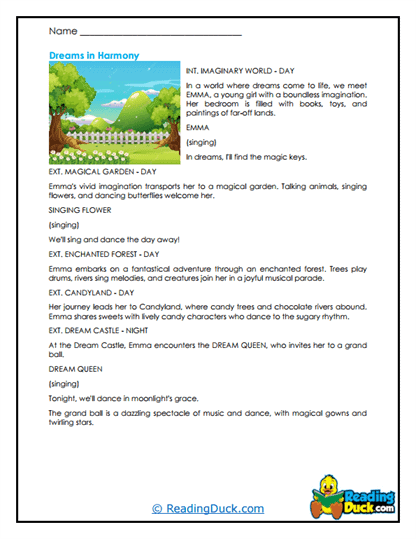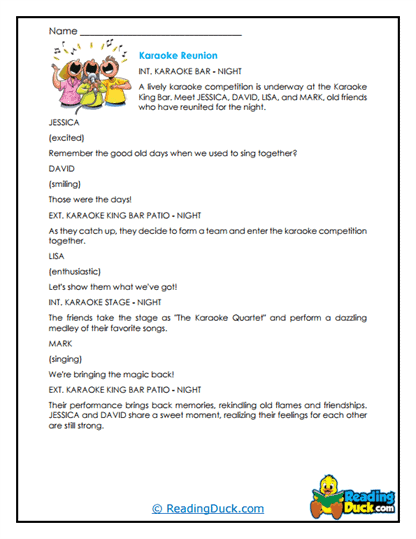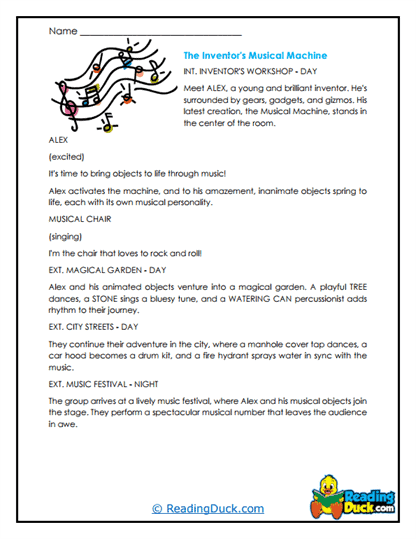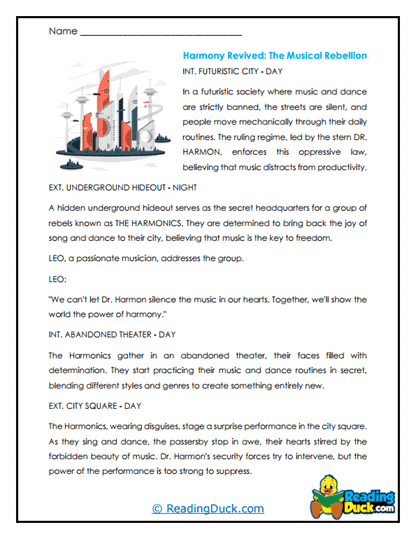Musical Worksheets
About Our Musical Worksheets
Our Musical Worksheets provide a comprehensive and engaging resource for students to explore the vibrant world of musicals, a unique genre within drama that combines storytelling with music, song, and dance. Each worksheet set is designed to enhance students’ understanding of musicals through carefully selected reading passages that reflect the genre’s key elements, followed by multiple-choice questions, short-answer prompts, and open-ended response activities. These worksheets encourage students to think critically about the integration of music and narrative while honing their reading comprehension and analytical skills.
Each worksheet is available in PDF format, making them simple to download, view, and print for easy use in both classroom settings and at home. Additionally, each worksheet set comes with a downloadable answer key, allowing educators to efficiently review responses and guide classroom discussions. Whether you are teaching about the history of musicals, analyzing specific works, or exploring the unique storytelling techniques of the genre, our Musical Worksheets offer a dynamic, flexible tool to support your curriculum.
Exploring the World of Musicals: Themes and Storytelling
Musicals are a distinctive form of dramatic art that combines spoken dialogue, music, and choreography to convey stories and emotions. In musicals, songs are not merely supplementary; they often serve as crucial vehicles for character development, plot progression, and emotional expression. The genre spans a wide range of tones and themes, from light-hearted comedy to deep, emotional drama, allowing it to resonate with diverse audiences.
Key themes and elements of musical drama include:
- Emotional storytelling through song: Songs in musicals often reveal a character’s innermost thoughts, feelings, and desires, using melody and lyrics to heighten emotional impact.
- Integration of music and plot: Music is seamlessly woven into the narrative, often serving as a critical device for plot development or the climax of the story.
- Character arcs expressed through song: Musical numbers can depict key turning points in a character’s journey, from personal growth to moments of conflict or triumph.
- Dynamic use of ensemble and solo performances: Musicals often blend large ensemble numbers with intimate solos or duets, creating a rich tapestry of sound that reflects the shifting dynamics of the narrative.
Our Musical Worksheets help students identify and analyze these elements within reading passages that mimic the structure and themes of classic and contemporary musicals. By examining how music and lyrics serve as powerful storytelling tools, students develop a greater appreciation for the genre’s unique approach to character development, emotional depth, and narrative complexity.
Developing Critical Analysis Through Musical Storytelling
The Musical Worksheets are carefully designed to encourage students to think critically about how music and drama intertwine to create a compelling narrative. Through a blend of factual comprehension and interpretive analysis, these worksheets challenge students to engage with the text in a way that deepens their understanding of the genre’s mechanics.
The worksheet structure includes:
- Multiple-choice questions: These questions assess students’ comprehension of the reading passage, helping them recognize key plot points, character motivations, and the role of specific musical numbers within the narrative. For example, students may be asked to identify which song best expresses a character’s internal conflict or choose the moment in the story where music plays a pivotal role.
- Short-answer questions: These prompts encourage students to delve deeper into the text by explaining how a particular song advances the plot or how the emotional tone of a song impacts a character’s decision-making. Students might analyze the contrast between dialogue and song, discussing how each serves the storytelling process.
- Open-ended response questions: These activities invite students to explore broader themes and engage in creative thinking. For instance, students could be asked to imagine how a scene from a musical would change if the song were replaced with spoken dialogue, or to write about how music in the passage reflects the story’s emotional core.
By balancing these different question types, the worksheets allow students to engage with the text in multiple ways, developing both their factual understanding and their ability to interpret the use of music as a narrative tool. This critical analysis not only enhances their appreciation for the musical genre but also fosters essential literary and dramatic skills.
Sparking Collaborative Learning and Group Discussions
Musicals are inherently collaborative, making them an ideal subject for group discussions and classroom collaboration. The Musical Worksheets are designed to foster interactive learning, encouraging students to share their interpretations of the text, debate the impact of musical elements, and explore different viewpoints in a group setting.
Examples of collaborative activities include:
- Analyzing song lyrics together: Students can work in groups to break down the lyrics of a key song from the passage, discussing how the words, rhythm, and melody contribute to the overall mood and themes of the story.
- Debating character motivations: Students can engage in debates over a character’s choices, analyzing how a specific song reveals hidden aspects of their personality or influences their decisions. This can prompt rich discussions about the role of music in shaping character arcs.
- Exploring alternative musical styles: Students can collaborate to reimagine a scene from the passage with a different musical genre (e.g., turning a ballad into an upbeat rock song) and discuss how the new style changes the tone or meaning of the scene.
By encouraging group work, these worksheets not only make learning about musicals more interactive but also help students develop important communication and collaboration skills. Through shared discussions, students can explore multiple interpretations of the material, building a deeper and more diverse understanding of the role music plays in drama.
Encouraging Creative Expression and Active Learning
One of the core goals of the Musical Worksheets is to inspire creative engagement and active learning. Musicals are a highly imaginative genre, blending artistic disciplines such as songwriting, performance, and choreography, and these worksheets encourage students to tap into their own creativity while exploring the material.
Creative activities supported by the worksheets include:
- Writing original song lyrics: After analyzing a key scene, students can write their own song lyrics for a new musical number that fits within the story, focusing on how their song enhances the character’s emotional journey or advances the plot.
- Acting out musical scenes: Students can act out scenes from the passage, experimenting with how dialogue transitions into song. This can help them understand the dramatic function of musical numbers and how music intensifies the emotional stakes.
- Designing a musical score: Students can create a musical score for a pivotal scene in the passage, selecting or suggesting the types of instruments, rhythms, and melodies that would best convey the scene’s emotional tone.
These creative exercises allow students to explore the dramatic and musical aspects of the genre in new, innovative ways, helping them to think more deeply about how musicals tell stories. By combining analytical skills with hands-on activities, students can fully immerse themselves in the process of bringing a musical narrative to life.
Expanding Understanding with Complementary Projects
The Musical Worksheets also provide a strong foundation for complementary projects that help students expand their understanding of musicals beyond the worksheet activities. These projects can bridge multiple disciplines—such as music, literature, and performance—allowing students to apply their knowledge in creative and engaging ways.
Suggested complementary projects include:
- Creating a short musical: After completing the worksheet, students can work in groups to write and perform a short musical based on a chosen theme, creating original songs and choreography to tell their story.
- Exploring historical musicals: Students can research the history of musicals, comparing different time periods or styles (e.g., Golden Age musicals vs. modern rock musicals) and presenting their findings to the class.
- Song analysis projects: Students can choose a song from a well-known musical and write an analysis of how the song functions within the story, focusing on its lyrics, music, and dramatic impact.
These extended projects help students apply their knowledge of musical theater in more practical, interdisciplinary contexts, encouraging them to think about how musicals reflect broader artistic trends and themes.
Integrating Musical Worksheets into Broader Curricula
The Musical Worksheets are highly versatile and can be easily integrated into units on drama, music, or literature. They are ideal for introducing students to the unique structure of musicals, analyzing specific musical works, or exploring how music and performance intersect with dramatic storytelling.
Educators can use these worksheets:
- In drama and theater studies: To help students understand how musicals differ from other dramatic genres and how music and performance contribute to storytelling.
- In literature units: To explore how musicals adapt literary works or themes into song, dialogue, and performance, examining how music transforms narrative techniques.
- For music appreciation classes: To analyze how melody, rhythm, and instrumentation in musicals enhance the emotional and dramatic impact of a story.
Whether used as part of a formative assessment or as the basis for creative projects, these worksheets help students engage with musicals in ways that deepen both their artistic and analytical skills.
Conclusion
Our Musical Worksheets provide an engaging and comprehensive way for students to explore the rich and dynamic world of musical theater. By combining reading passages with critical analysis and creative exercises, these worksheets foster a deeper understanding of how music, song, and drama intertwine to create powerful stories. Available in PDF format with downloadable answer keys, these worksheets are a valuable resource for both individual and group learning, helping students develop their critical thinking, creativity, and appreciation for the unique craft of musicals.
